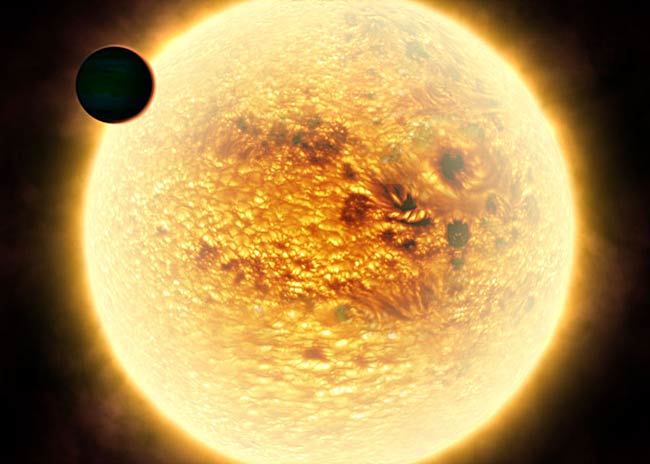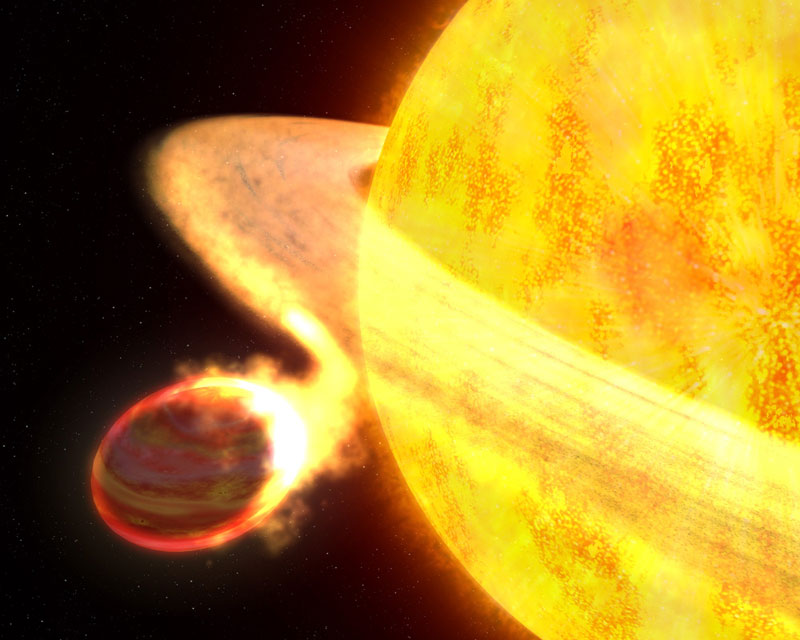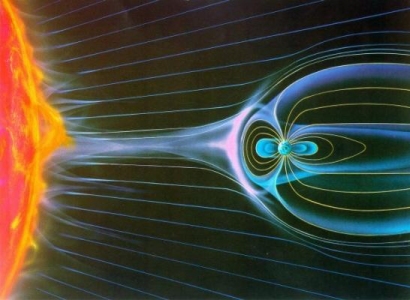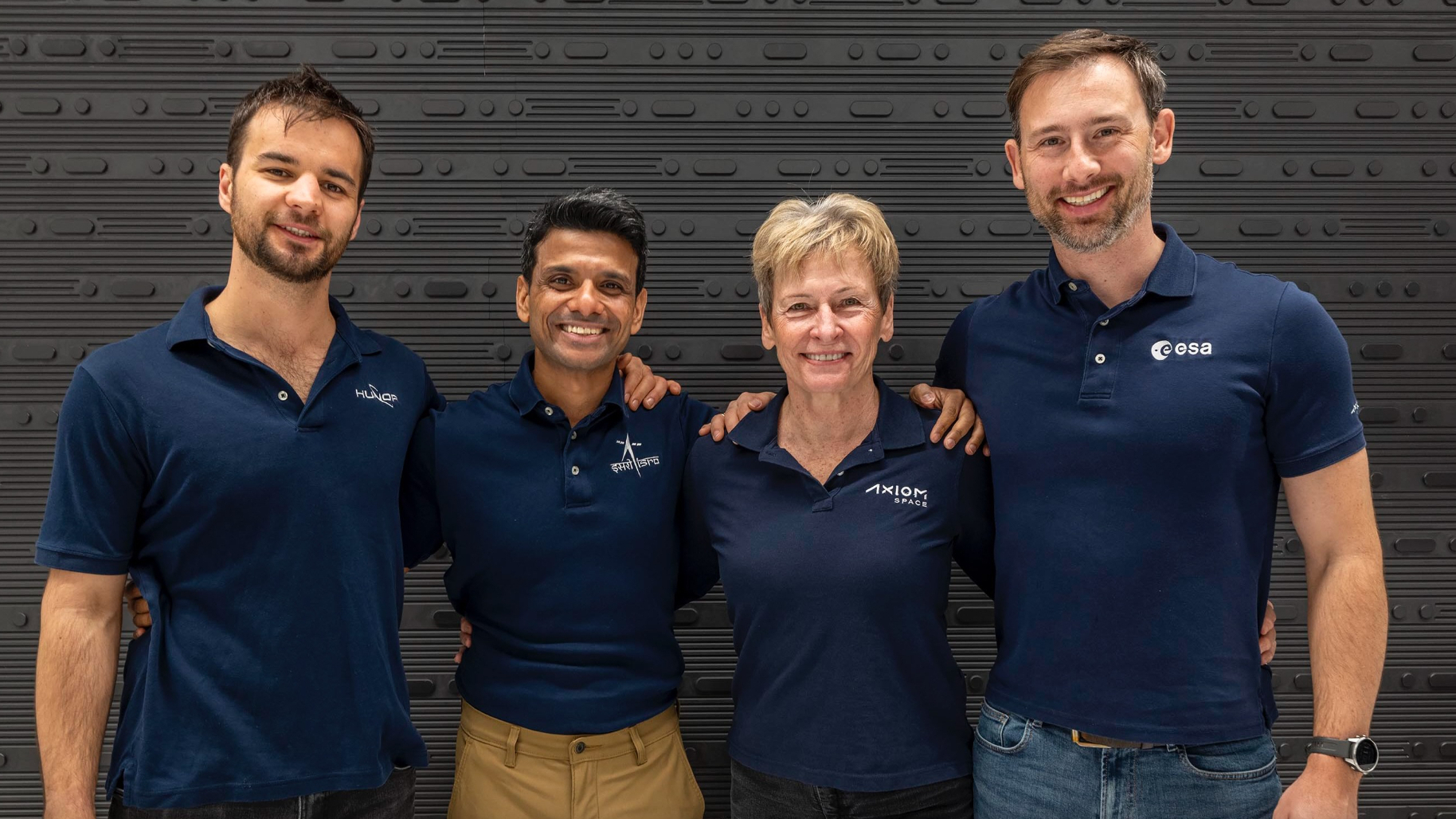Hottest Known Planet May Use Shock Wave to Save Atmosphere

The hottest alien planet yet known may create a shock wave-like shield to protect itself against the atmosphere-stripping side effects of circling close to its parent star, a new study suggests.
Scientists using computer simulations to explain observations of the ultrahot alien planet WASP-12b located around a star 867 light-years from Earth say the exoplanet could be pushing a shock wave — called a bow shock — ahead of it as it plows through a supersonic headwind while orbiting its star. The effect is similar to the shock wave ahead of a supersonic aircraft.
Discovered in 2008, WASP-12b is currently the hottest known alien planet and orbits the closest to its parent star — about 2.1 million miles (3.4 million kilometers). The planet is almost twice the size of Jupiter and has a surface temperature of about 4,000 degrees Fahrenheit (2,200 degrees Celsius), according to previous studies. [The Strangest Alien Planets]
By contrast, Earth is about 93 million miles (150 million km) from the sun. WASP-12b circles its parent star once every Earth day.

Last year, scientists at the Open University found that that WASP-12b's parent star dimmed sooner in ultraviolet wavelengths than in optical wavelengths during transits, times when the exoplanet passed in front of the star as seen from Earth.
Astronomers suspected that the signal was caused by a cloud of material being stripped away the planet by its parent star. Observations taken by the Hubble Space Telescope also suggested the planet has a magnetic field, or a magnetosphere. [Video: Mapping Alien Worlds: How-To Guide]
The new simulation from researcher Aline Vidotto and Ph.D. student Joe Llama found that the magnetic field could support a bow shock ahead of WASP-12b to shield the planet from its stellar parent. The researchers simulated magnetic fields for the planet observed their interactions with the solar wind streaming from the nearby star.
Breaking space news, the latest updates on rocket launches, skywatching events and more!
Here's how the planet's bow shock would work:
WASP-12b orbits a yellow dwarf star that spews out charged particles much like the sun's solar wind. As WASP-12b orbits the star, the exoplanet compresses the material in front of it, creating the bow shock. This shock wave could then protect WASP-12b from the rain of charged particles that would otherwise erode its atmosphere.

The research was presented Monday (April 18) at the Royal Astronomical Society's national meeting in Llandudno, Wales.
The interactions between the magnetosphere and the solar material provide an opportunity to study WASP-12b's magnetic field more thoroughly, the researchers said.
"The location of this bow shock provides us with an exciting new tool to measure the strength of planetary magnetic fields," Vidotto said in a statement. "This is something that presently cannot be done in any other way."
In February, the research team examined several other exoplanets and concluded that orbital conditions of many of them would permit a similar bow shock.
"Our models are able to reproduce the data from the Hubble Space telescope for a range of wind speeds, implying that bow shocks could be far more commonplace than had been thought," Llama said.
Follow SPACE.com for the latest in space science and exploration news on Twitter @Spacedotcom and on Facebook.
Join our Space Forums to keep talking space on the latest missions, night sky and more! And if you have a news tip, correction or comment, let us know at: community@space.com.

Nola Taylor Tillman is a contributing writer for Space.com. She loves all things space and astronomy-related, and always wants to learn more. She has a Bachelor's degree in English and Astrophysics from Agnes Scott College and served as an intern at Sky & Telescope magazine. She loves to speak to groups on astronomy-related subjects. She lives with her husband in Atlanta, Georgia. Follow her on Bluesky at @astrowriter.social.bluesky
